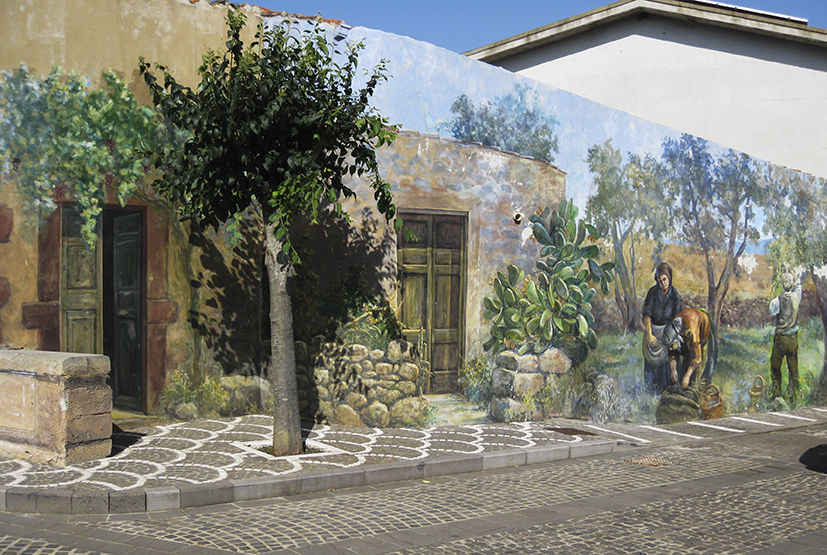Reading time: 3 minutes
Table of Contents
- Introduction
- History and Culture of Tinnura
- The Murals: An Open-Air Museum
- Events and Traditions
- How to Get to Tinnura
- Nearby Points of Interest
- Conclusion
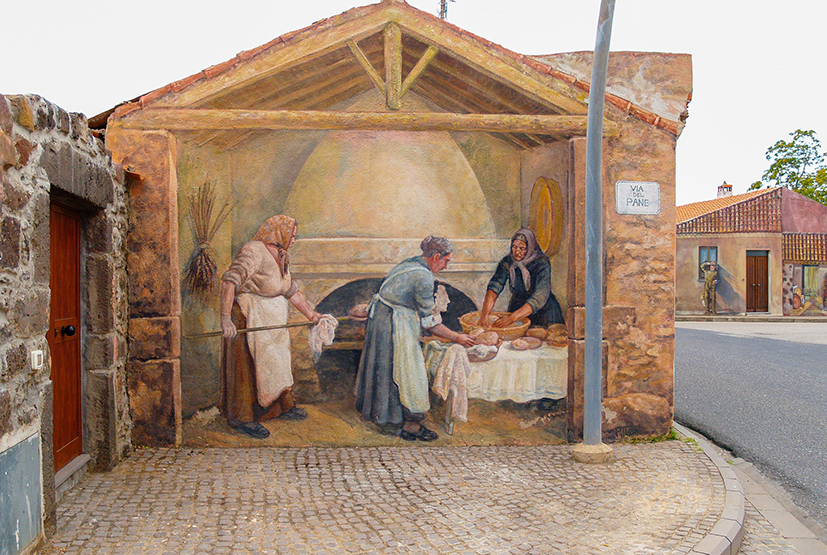
Introduction
Hidden among the gentle hills of Planargia, in the province of Oristano, Tinnura is one of the smallest and most charming villages in Sardinia.
With just 250 inhabitants, this tiny village is a must-see destination for those who want to discover the island’s most authentic soul, far from the typical tourist routes. In recent decades, the town has become famous for its stunning murals that depict scenes of everyday life, traditions, and local legends.
If you’re wondering what to see near Bosa, this little village lies just 15 kilometers from the picturesque riverside town and offers a unique cultural experience. The contrast between its small size and the richness of its artistic and cultural heritage makes Tinnura a surprising and memorable stop during a journey through the Sardinian inland.
History and Culture of Tinnura
The origins of Tinnura date back to pre-Nuragic times, as evidenced by the many Giants' Tombs and nuraghi scattered across the surrounding territory. The village has witnessed the various dominations that have shaped Sardinia’s history—from the Romans to the Spanish—yet it has always preserved its distinct cultural identity.
Tinnura’s economy has traditionally been tied to agriculture and sheep farming, activities that have shaped not only the surrounding landscape, with its olive groves and vineyards, but also the character and traditions of its people. Despite its small size, the village has managed to maintain a strong sense of community, which is still visible today in the local festivals that mark the passing of the year.
The name "Tinnura" has very ancient origins, likely dating back to pre-Roman times. Its root “Tin” is linked to the Proto-Sardinian term t(h)innía or thinníga, which scholars believe referred to the spiny rush plant. Even today, Tinnura is renowned for using this plant—along with asphodel—in traditional local handicrafts.
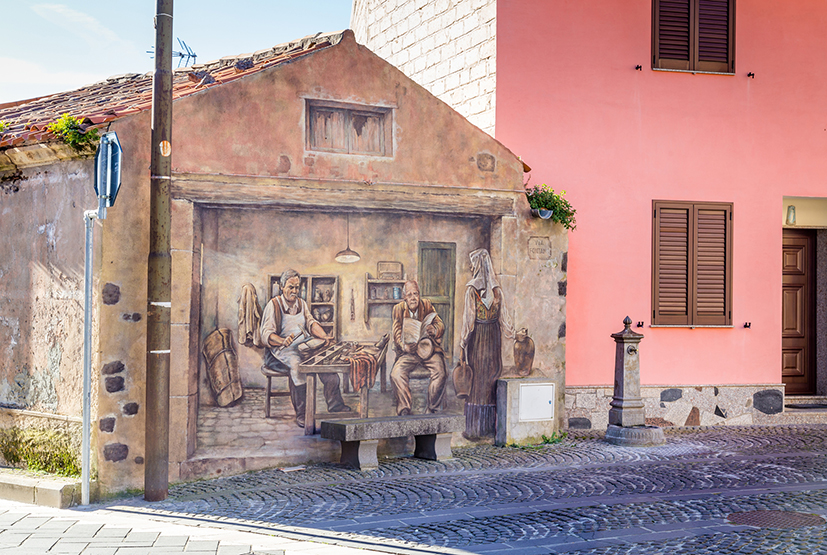
The Murals: An Open-Air Museum
The true treasure of Tinnura lies in its magnificent murals, which turn the small village into an open-air museum.
Unlike Orgosolo, where murals emerged as a form of political protest, in Tinnura they began as a cultural project aimed at celebrating the village’s history, traditions, and everyday life.
As you stroll through the narrow streets of the village, you’ll find more than 20 works of art created by various artists. Among them stands out local artist Pina Monne, who has her studio right in Tinnura and has made a significant contribution to this artistic heritage.
The murals aren’t concentrated in a single area, but are spread throughout the village, creating an artistic path that invites visitors to explore every corner. Many are surprised to discover such an abundance of art and culture in such a small place.
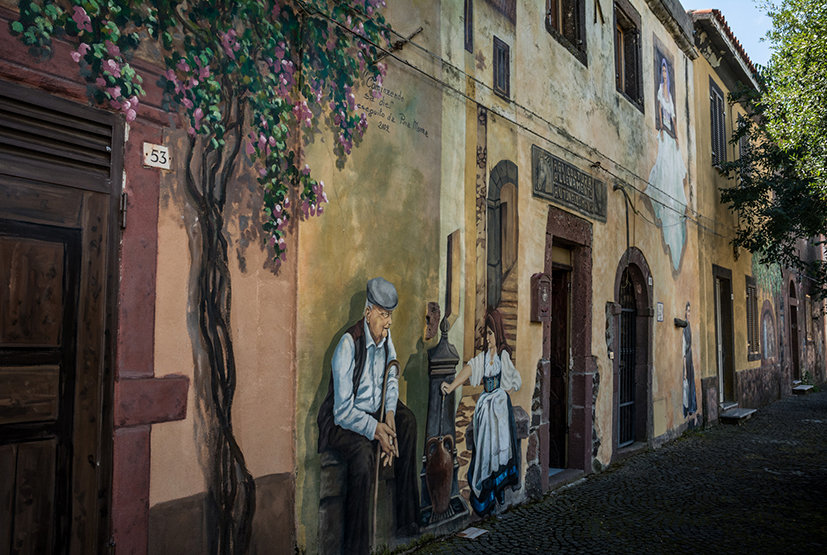
Events and Traditions
Despite its small size, Tinnura keeps many traditions and celebrations alive, reflecting the rich culture of Sardinia.
One of the main events is the feast of Saint Anne (Sant’Anna) at the end of July, which enlivens the village with processions, concerts, and food festivals.
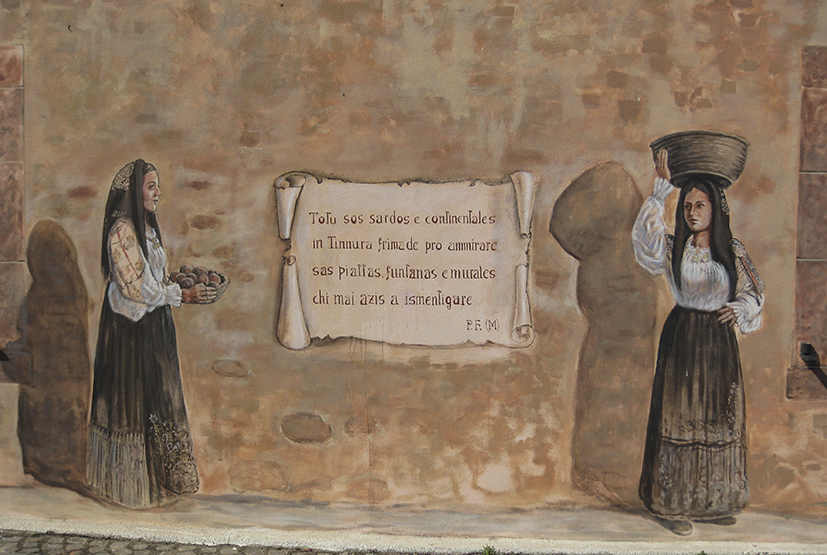
How to Get to Tinnura
If you're planning to visit Tinnura during your trip to Sardinia, here are some useful directions:
By car:
-
From Alghero, take the SS292 south, then follow the SP19 towards Bosa and finally the SP44 to reach the village.
-
From Bosa, Tinnura is just a 12-minute drive via the SS192Bis.
-
From Oristano, take the SS292 in the direction of Bosa.
By bus:
There are connections from Bosa, Macomer, and Oristano operated by the ARST company. However, for greater flexibility, renting a car is recommended.
Once you arrive in Tinnura, the best way to explore the village is on foot. Its small size allows for a peaceful visit in just a few hours, while enjoying the slow pace and authentic atmosphere that make it so special.
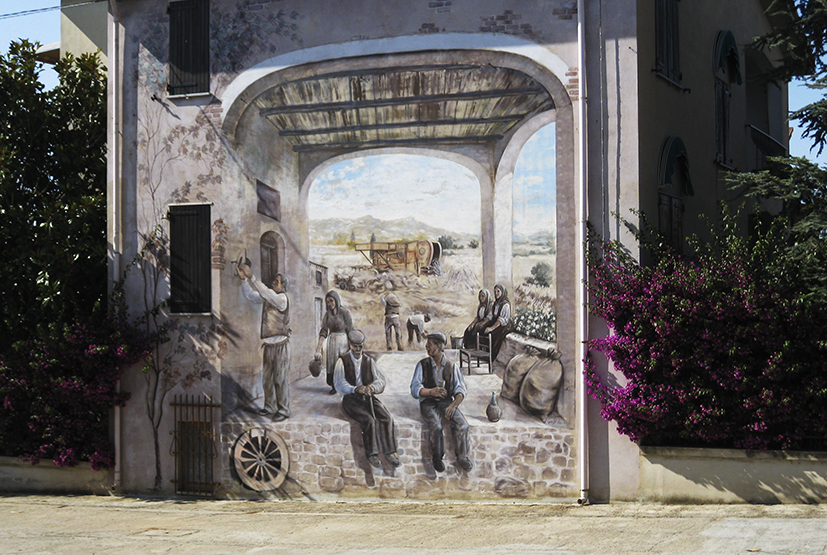
Nearby Points of Interest
Tinnura is strategically located, making it easy to explore other nearby attractions in the region.
Bosa (9 km): This picturesque town on the Temo River is definitely worth a visit. Its colorful historic center, the Malaspina Castle, and the old tanneries along the river offer a unique experience.
Beaches of Bosa Marina (10 km): For sea lovers, the beaches around Bosa offer crystal-clear waters and breathtaking landscapes.
Flussio (0.5 km): Famous for its handmade baskets crafted using the ancient art of weaving. Visitors can explore workshops where weaving techniques are passed down from mother to daughter.
These locations are easily reachable by car from Tinnura and can be visited in a day, making the village a great base for exploring this fascinating part of Sardinia.
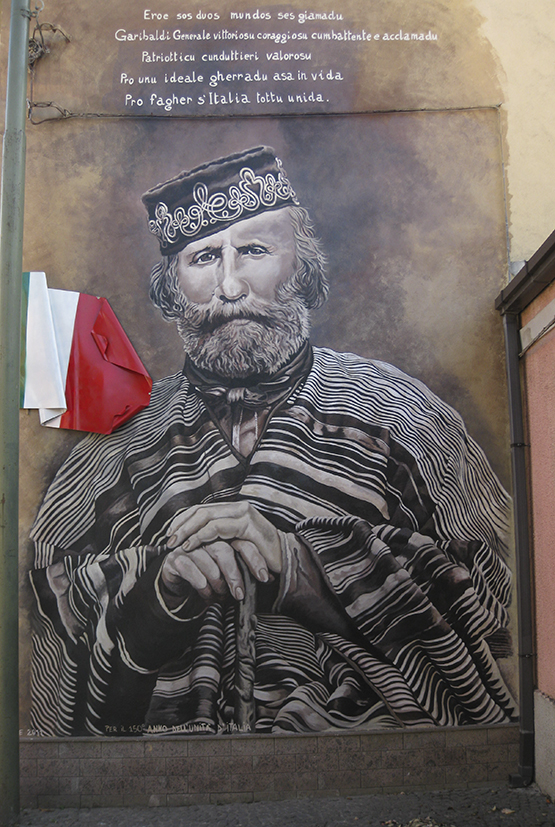
Conclusion
Tinnura is one of those hidden gems that make Sardinia such a fascinating and surprising destination. This tiny village, with its beautiful murals and authentic, welcoming atmosphere, offers a deep cultural experience that far exceeds its size.
Visiting Tinnura means taking a journey through time and Sardinian traditions, far from mass tourism and in close contact with a community that has preserved its cultural identity over the centuries. The murals of Tinnura, with their depictions of daily life and traditions, are not just decorative art—they are a powerful form of collective memory and cultural identity.
If you’re looking for things to see near Bosa or what to do in the area, don’t miss the chance to include Tinnura in your itinerary. Even a short visit will leave a lasting impression and allow you to discover a side of Sardinia often overlooked by traditional tourist routes.
This article is part of the “Discovering Sardinia” series, dedicated to discovering the island’s lesser-known treasures. Check out the other articles in this section to explore more unique destinations.
Enjoyed this article?
Support my work and help me create more Sardinia travel guides like this one.



